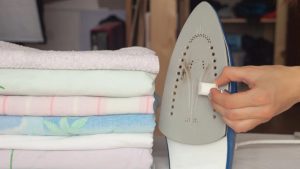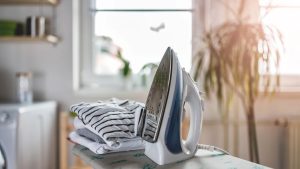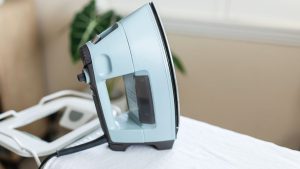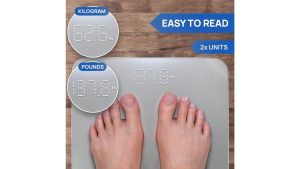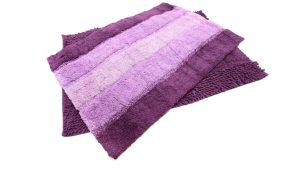How Do You Clean an Iron Soleplate
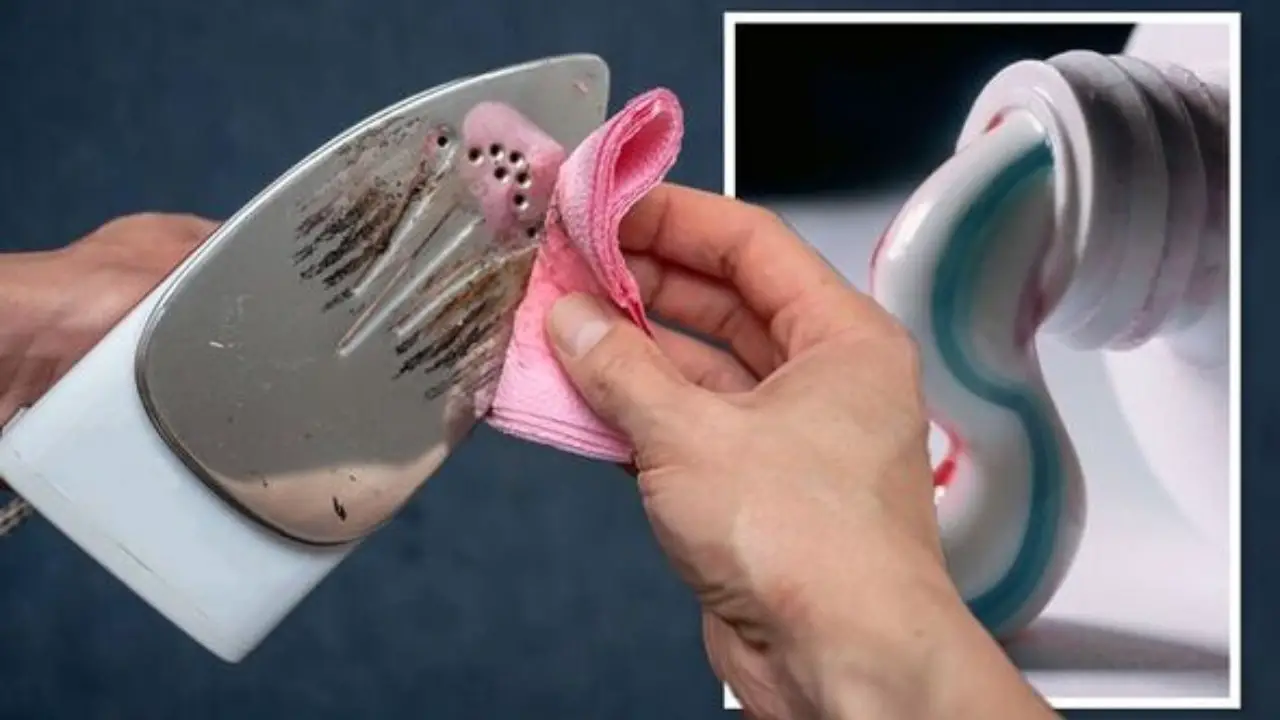
To clean an iron soleplate, make a paste of baking soda and water, then apply it to the soleplate with a cloth and wipe it clean. You can also use a cotton swab dipped in vinegar to clean tough spots and residue.
Cleaning the soleplate of iron is an important maintenance task that helps to ensure the appliance functions properly and does not stain your clothes. Over time, the soleplate can accumulate residue from fabric, such as starch or burnt-on stains.
If not removed, this residue can transfer to clothing and result in unsightly marks. Therefore, regular cleaning of the iron soleplate is essential for maintaining its effectiveness and ensuring the quality of your garments. We will discuss effective ways to clean an iron soleplate and keep it in good condition.
Understanding Iron Soleplate Buildup
Causes Of Residue Buildup
One of the primary causes of residue buildup on your iron’s soleplate is the accumulation of mineral deposits from the water you use. The minerals can solidify and form a crusty layer on the plate, hindering its smooth glide over fabrics. Additionally, using starch or spray-on fabric treatments can also leave a residue on the soleplate over time, impacting its efficiency.
Recognizing When Your Iron Needs Cleaning
It’s essential to recognize when your iron needs cleaning to prevent damage to your garments and ensure optimal ironing performance. If you notice brown or discolored streaks on your fabrics or your iron is sticking to the clothes, it’s a clear sign that the soleplate needs cleaning. The presence of a rough texture on the surface or a foul odor emanating from the iron also indicates the presence of buildup.
Safe Cleaning Methods For Iron Soleplate
Safely cleaning the soleplate of your iron is essential for maintaining its efficiency and preventing stains on your garments. Using effective and safe cleaning methods for iron soleplates will keep your iron in pristine condition, allowing for smooth and hassle-free ironing. Whether you prefer natural cleaning solutions or commercial iron cleaners, ensuring the cleanliness of your iron soleplate is key to achieving optimal performance.
Natural Cleaning Solutions
When it comes to natural cleaning solutions for your iron soleplate, several household items can be used to effectively remove residue and build-up. Vinegar is a popular choice due to its acidic properties, which help dissolve mineral deposits and other impurities. To use vinegar, mix equal parts vinegar and water and gently wipe the soleplate with a soft cloth. Afterward, wipe the soleplate with a damp cloth to remove any residual vinegar. Another effective natural cleaning agent is baking soda. Create a paste using baking soda and water, then apply it to the soleplate and gently scrub with a soft brush or cloth. This method helps to eliminate stubborn stains and grime, restoring the soleplate to its original condition.
Using Commercial Iron Cleaners
For a more specialized approach, consider using commercial iron cleaners. These products are specifically formulated to remove stubborn residue and maintain the soleplate’s smooth surface. Follow the instructions provided by the manufacturer to ensure safe and effective application. When using commercial iron cleaners, always ensure that the product is suitable for the material of your soleplate. Some iron cleaners are designed for specific iron types and may not be suitable for all models.
Step-by-step Cleaning Process
When it comes to keeping your clothes looking fresh and neat, having a clean iron soleplate is essential. Over time, the soleplate of your iron can accumulate residue from various fabrics, affecting its ability to glide smoothly over clothing. It’s crucial to clean the soleplate regularly to maintain its efficiency. Here’s a step-by-step guide to cleaning your iron soleplate effectively.
Preparing The Soleplate
Before beginning the cleaning process, it’s important to prepare the soleplate by first ensuring that your iron is unplugged and completely cool. Place it on a clean, flat surface and remove any water from the reservoir. Gather the necessary materials for cleaning, including a soft cloth, cotton swabs, and a cleaning solution.
Applying The Cleaning Solution
Once the soleplate is prepared, apply a small amount of cleaning solution specifically designed for iron soleplates. Ensure that the cleaning solution is suitable for the type of iron you have, as some solutions are designed for specific materials such as stainless steel or nonstick surfaces. Apply the solution to the soleplate, focusing on areas with stubborn residue.
Wiping And Polishing The Soleplate
After allowing the cleaning solution to sit for the recommended time, gently wipe the soleplate with a soft cloth to remove the residue and cleaning solution. For hard-to-reach areas or stubborn residue, use a cotton swab dipped in the cleaning solution. Once the soleplate is clean, use a separate dry cloth to polish and buff the surface, ensuring that no residue or cleaning solution remains. Finally, fill the reservoir with water, plug in your iron, and set it to the highest steam setting. Run the iron over a clean cloth to ensure that any remaining residue is removed before using it on your garments.
Preventing Future Buildup
Preventing future buildup on your iron soleplate is crucial to maintaining its performance and longevity. By implementing simple and effective maintenance techniques, you can ensure that your iron continues to function smoothly.
Tips For Maintaining A Clean Soleplate
Regular maintenance is key to preventing buildup on your iron soleplate. By following these simple tips, you can maintain a clean and efficient iron:
- Always ensure the iron is completely dry before storing it to avoid corrosion and mineral buildup.
- Use distilled or filtered water in your iron to prevent mineral deposits.
- Wipe the soleplate with a damp cloth after each use to remove any residue or stains.
- Inspect the soleplate periodically for any signs of buildup and take appropriate cleaning measures to prevent it from escalating.
Storing The Iron Properly
Proper storage of your iron is crucial to prevent future buildup and maintain its performance. Consider these guidelines for storing your iron:
- Allow the iron to cool completely before storing it to prevent any moisture from being trapped within the iron.
- Ensure that the iron is stored in an upright position to prevent water leakage and mineral buildup in the steam vents.
- Store the iron in a dry and well-ventilated area to prevent the accumulation of moisture and mold.
- Use a protective cover or fabric sleeve for the soleplate to prevent scratches and debris buildup during storage.
Troubleshooting Common Issues
Cleaning an iron soleplate is crucial for maintaining the efficiency of your iron. However, there are common issues that can arise during the cleaning process. Knowing how to troubleshoot these issues is key to keeping your iron in top condition for optimal performance.
Dealing With Stubborn Stains
Stubborn stains on the soleplate of your iron can be a frustrating obstacle. When faced with stubborn stains, there are several methods you can use to effectively remove them:
- Mix equal parts of distilled white vinegar and water. Dampen a cloth with the solution and gently rub the stained areas of the soleplate.
- For tougher stains, sprinkle a small amount of baking soda onto a damp cloth and gently scrub the affected areas of the soleplate.
- Use a commercial iron cleaner following the manufacturer’s instructions to effectively tackle stubborn stains.
Avoiding Damage To The Soleplate
It’s essential to clean the soleplate properly without causing any damage. Here are some tips to avoid damaging the soleplate during the cleaning process:
- Avoid abrasive materials: When cleaning the soleplate, refrain from using abrasive materials that could scratch or damage the surface.
- Test cleaning solutions: Before applying any cleaning solution to the soleplate, perform a small test on an inconspicuous area to ensure it does not cause damage.
- Regular maintenance: Perform routine cleaning and maintenance to prevent the accumulation of tough stains and debris on the soleplate.
Frequently Asked Questions On How Do You Clean An Iron Soleplate
How Do You Clean A Burnt Iron Sole Plate?
To clean a burnt iron sole plate, mix equal parts of vinegar and salt and heat the iron. Rub the mixture on the soleplate, then wipe with a clean cloth. Repeat until the burnt residue is removed. Finally, wipe the soleplate with a damp cloth and dry thoroughly.
What Is The Best Way To Clean The Bottom Of An Iron?
The best way to clean the bottom of an iron is by using a mixture of vinegar and water. Apply the mixture to a cloth and wipe the iron’s soleplate. Finish by wiping with a clean damp cloth. Regular maintenance can help prevent buildup and maintain iron performance.
How Do You Get Brown Residue Off An Iron?
To remove brown residue from an iron, mix equal parts vinegar and water, then pour the solution into the iron’s water chamber. Turn on the iron and steam the mixture for 5-10 minutes, then empty the chamber and refill it with clean water. Iron a cloth to remove any remaining residue.
How Do You Remove Sticky Residue From The Bottom Of An Iron?
To remove sticky residue from the bottom of an iron, mix equal parts of vinegar and water. Rub the solution onto the residue with a cloth. Heat the iron to steam and wipe the soleplate with a clean cloth. Repeat if needed.
How can I clean my iron soleplate effectively?
To clean your iron soleplate, start by making a paste of baking soda and water. Apply this mixture to the soleplate, scrub gently with a soft cloth, and wipe off with a damp cloth.
Can I use vinegar to clean my iron’s soleplate?
Yes, you can. Mix equal parts of vinegar and water, dip a cloth in the solution, and wipe the soleplate. Ensure the iron is unplugged and cooled before cleaning.
What if there are stubborn stains on the soleplate?
For stubborn stains, try a mixture of salt and white vinegar. Apply the paste, let it sit for a few minutes, then scrub with a cloth. Wipe off any residue with a damp cloth.
Is it safe to use commercial iron cleaners?
Yes, but follow the manufacturer’s instructions. Some commercial cleaners are specifically designed for iron soleplates. Always ensure the iron is unplugged and cool before using any cleaner.
Can I use abrasive materials to clean the soleplate?
Avoid abrasive materials as they may damage the soleplate. Stick to soft cloths, baking soda paste, or vinegar solutions for effective yet gentle cleaning.
How often should I clean my iron’s soleplate?
Regularly clean the soleplate to prevent buildup. If you notice residue or stains, clean it promptly. A clean soleplate ensures better ironing performance and prolongs the life of your iron.
Are there any precautions I should take while cleaning the iron soleplate?
Yes, always ensure the iron is unplugged and completely cool before cleaning. This prevents any risk of burns or electrical accidents. Additionally, follow the specific cleaning guidelines provided by your iron’s manufacturer.
Can I use a steam iron to clean the soleplate?
While steam can help loosen debris, it’s advisable to use a dedicated cleaning method. Excessive steam or water on a cool soleplate can lead to rust. Stick to dry or slightly damp cleaning methods.
What if I accidentally get cleaner on other parts of the iron?
If the cleaner comes into contact with the body of the iron, wipe it off immediately with a damp cloth. Avoid letting any cleaning solution seep into the internal components.
Should I clean the iron’s steam vents separately?
Yes, include the steam vents in your cleaning routine. Use a cotton swab or a soft brush dipped in a cleaning solution to remove any mineral deposits or debris from the steam vents.
Is there a natural alternative for cleaning the soleplate?
Lemon juice is a natural alternative. Mix lemon juice with salt to form a paste, apply it to the soleplate, and scrub gently. Wipe off with a damp cloth for a natural and effective clean.
What if my iron has a non-stick coating?
Exercise caution with non-stick-coated soleplates. Use gentle cleaning methods to avoid damaging the coating. Check the manufacturer’s instructions to ensure compatibility with your chosen cleaning solution.
Conclusion
In sum, maintaining a clean soleplate is crucial for the efficient performance of your iron. By following simple cleaning methods, you can ensure that your iron remains in top condition and delivers wrinkle-free clothes every time. Regular maintenance will prolong the life of your iron and keep it in prime condition for years to come.


